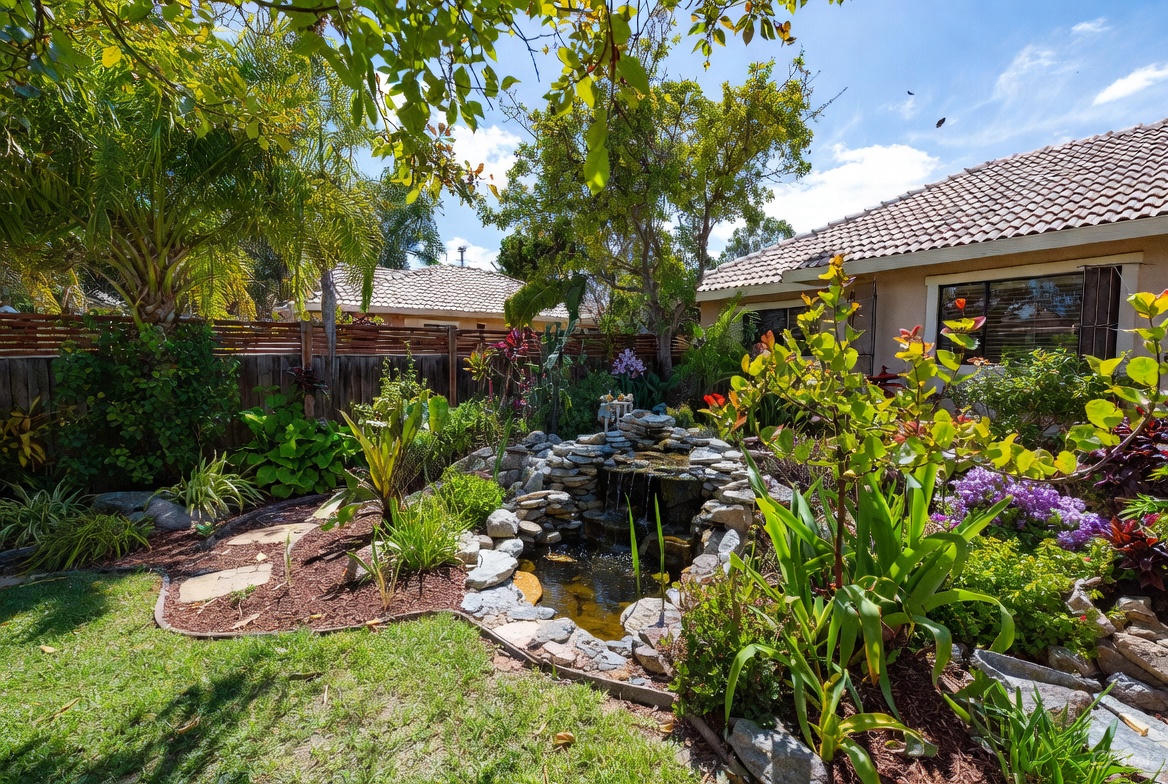
Add interest and uniqueness to a landscape design by choosing plants that offer textural contrast to the yard. In terms of garden design ‘texture’ is a visual term as opposed to a tactile one. Texture can be utilized in various ways, but focusing on plant leaves are one of the best ways to create a pleasing aesthetic. The goal is to punch up the foliage contrast of texture in comparison to the plants next to it and so on throughout the yard’s design.
In general, leaves fall primarily into one of three categories: fine, medium, or coarse (bold). Coarse plants have a big visual impact with large leaves and a heavy feel. They tend to stop the eye and can make a space seem smaller. This isn’t necessarily negative. Indeed, bold plants serve as captivating focal points and bring perspective in the garden. Coarse plant examples are canna, hosta, oakleaf hydrangea, elephant ear, and Japanese aralia.

Fine and medium textured plants encourage your eye to follow where they lead, making spaces look larger. Maidenhair fern, spirea, lavender, abelia, cosmos, have small, thin, or airy leaves placing them into the fine category. Plants with leaf sized in between these examples fall somewhere in the middle. Ornamental grasses like Mexican feather grass, fountain grass, bamboo muhly, and gulf muhly can be used as a fine or medium texture. Fine and medium plants are good choices for planting down the sightline of a pathway as they offer the illusion of a deep garden even if one doesn’t exist.
All of that said, remember that texture is always in comparison to the plant next to them. For example, rhododendron leaves are thought of as coarse. However, when it’s planted next to a hosta, the rhododendron ‘changes’ texture and becomes medium.

Make Plants Change Texture
Other ways of making texture change and work for you are:
- Shiny or dull leaf surfaces can have opposite texture regardless of leaf size. For example, say you have two plants with the same size medium leaves. The only difference being one has shiny leaves, and the other has dull leaves. The shiny-leaved plant will reflect light in all directions, giving the appearance of being finer textured than the dull one. The dull leaves of the other plant absorb light, and you see it as a whole leaf, resulting in a coarser feel.
- Leaf color can help a plant change texture. For example, green-leafed euonymus is a medium, while the variegated leafed variety with its creamy edges, will bring a finer texture. The same is true of leaves with a light or silver underside.
- Distance of placement can change everything. A plant can change its textural feel depending on its placement in the yard. For example, evergreens with their needle leaves are fine textured in general. However, placed at the back of a garden, the entire tree shape-shifts as the needles are undefinable from that distance. It becomes one large shape and becomes coarse looking.
Using plant texture to create a masterful impact in the yard or garden isn’t about which plant is superior, but rather which combination of textures create the desired aesthetic in the landscape.




.jpg)

